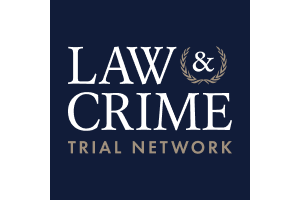- Free Consultation: (213) 800-7664 Tap Here to Call Us
What is a CLETS Restraining Order in California?
If you’ve applied for or defended against a California restraining order, you may have noticed the term “CLETS” on some of the forms you filled out. CLETS stands for “California Law Enforcement Telecommunications System” and is used as a designation for certain restraining orders. The primary difference between a CLETS restraining order and a traditional restraining order is that law enforcement is authorized to arrest anyone in violation of a CLETS restraining order. While a violation of a non-CLETS order could also result in an arrest, that is rarely the case because non-CLETS orders are not entered into the CLETS database. Read on to learn about the other differences between CLETS and non-CLETS restraining orders.
How Does a CLETS Restraining Order Work?
Before you formally ask the court to grant a restraining order, you must fill out a few different forms. For example, if you are seeking a Domestic Violence Restraining Order, you will need to complete the Request for Domestic Violence Restraining Order (DV-100), where you’ll provide some basic information about yourself and the abusive party and outline the abuse they’ve subjected you to. In addition, you are required to complete form CLETS-001 – Confidential CLETS Information.
Form CLETS-001 is a document requesting very basic information about you and the person against whom you are seeking a restraining order. For example, you’ll be asked to provide the following information about the restrained party:
- Legal Name,
- Other names used by the person,
- Whether they have any distinctive marks, tattoos or scars,
- Social Security number,
- Driver’s license number,
- Telephone number,
- Vehicle make, model, and year, and
- Employer name and address,
Additionally, you’ll be asked to indicate whether the person speaks English and whether you know them to own any firearms.
Of course, depending on your relationship with the other person, you may not know all this information. That’s okay; just fill out as much of the form as you can.
Once you complete the form and submit the other required documents, the court will determine whether to issue a temporary restraining order (“TRO”). The court makes this decision without the other party present and bases the decision solely on the information you provided in your request for a restraining order.
If the court grants a TRO, it may or may not enter the order into the CLETS system. However, a TRO only lasts a few weeks until the court can hold an official hearing to determine if a permanent restraining order is appropriate. Note that before the hearing for a permanent restraining order, you’ll need to serve the other party to ensure they have notice of the hearing.
At the hearing, your restraining order attorney will present your case. Then, the restrained party’s attorney will present a defense. If the court determines that you are in need of a restraining order, then it will grant your order, and if you filled out form CLETS-100, the court can also enter the restraining order into the CLETS database.
What Is the CLETS Database?
The CLETS database is a computer network that gives law enforcement officers access to national databases maintained by the Federal Bureau of Investigation, the California Department of Motor Vehicles, and other agencies. Once an order is entered into the CLETS database, any law enforcement officer in California can pull up the order. This enables police officers to verify the existence and terms of a restraining order, which can trigger an obligation to arrest anyone in violation of the order.
Under California Penal Code § 836(c)(1), when a police officer responds to a call for a potential violation of a restraining order, they MUST arrest anyone who committed an act in violation of a restraining order. This arrest does not require a warrant and occurs on the spot. However, before an officer can determine that someone committed an act in violation of a restraining order, the officer must verify that a restraining order exists.
This is where the CLETS database comes into play; by giving law enforcement officers a way to verify a restraining order is in place while on the scene, CLETS makes it possible for police to enforce these orders. Without the CLETS system, police would be in the position of asking the protected party to provide a copy of the order, which they may or may not have on hand.
Are Non-CLETS Orders Unenforceable?
Not exactly. Non-CLETS restraining orders are still enforceable, and anyone who violates a non-CLETS order could still be arrested. However, it is much harder for police officers to reach the quantum of evidence needed to make an arrest—called probable cause—if the officers do not have access to the restraining order. Thus, in most cases, someone who is protected by a non-CLETS restraining order would need to go back to court to inform the judge that the protected party violated the order. The judge would then hold a hearing to determine if the order was violated.
Do You Have Questions About Obtaining a Los Angeles Restraining Order?
If you recently determined that you need the protection provided by a restraining order, it is imperative that you treat the situation with the seriousness it deserves. At Power Trial Lawyers, our Los Angeles restraining order lawyer has extensive experience preparing and litigating in favor of and opposing all types of restraining orders, including domestic violence restraining orders, civil harassment restraining orders, elder or dependent adult abuse restraining orders, and workplace violence restraining orders. We are immediately available to meet with you to discuss your needs during a free consultation, where we will answer your questions, outline your rights, and explain what we can do to help. To learn more, and to schedule a free consultation today, call Power Trial Lawyers at 213-800-7664. You can also connect with us through our secure online contact form.


















